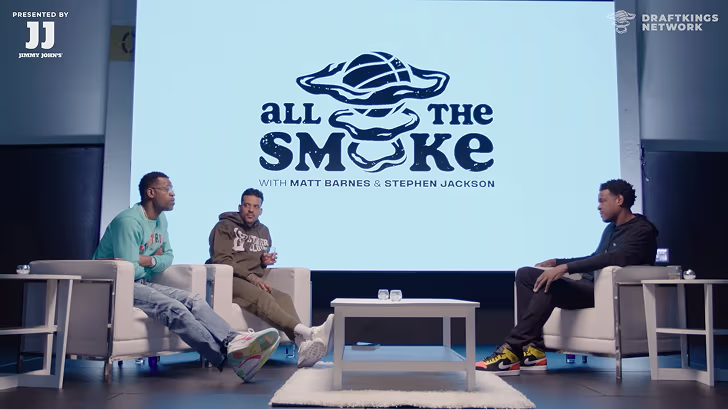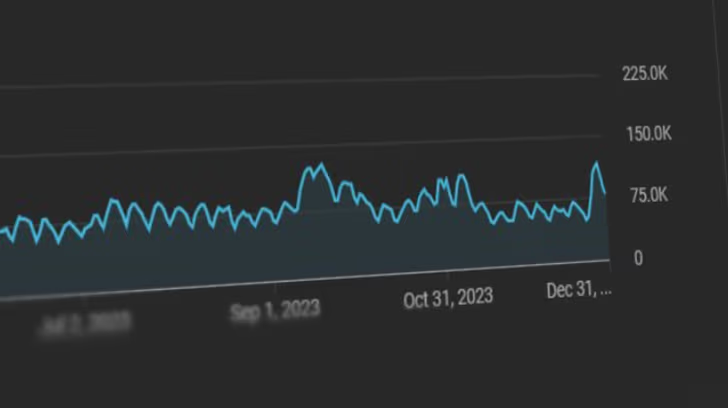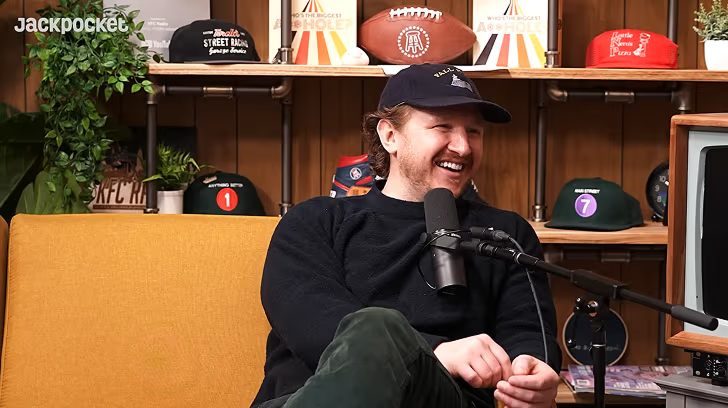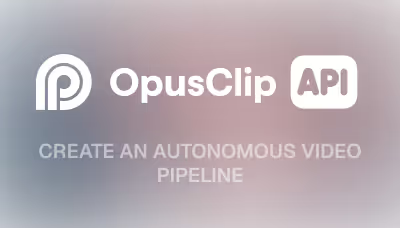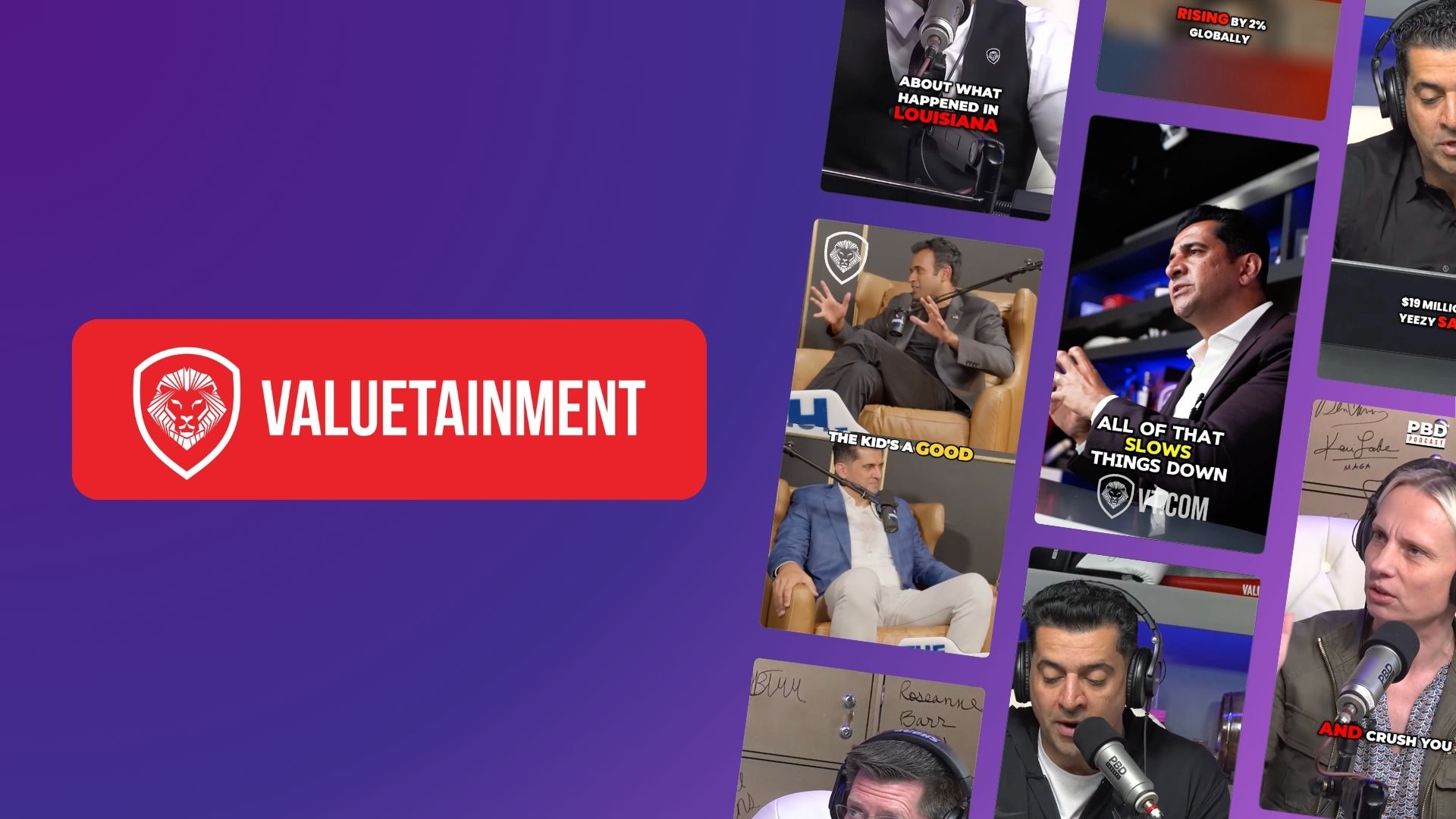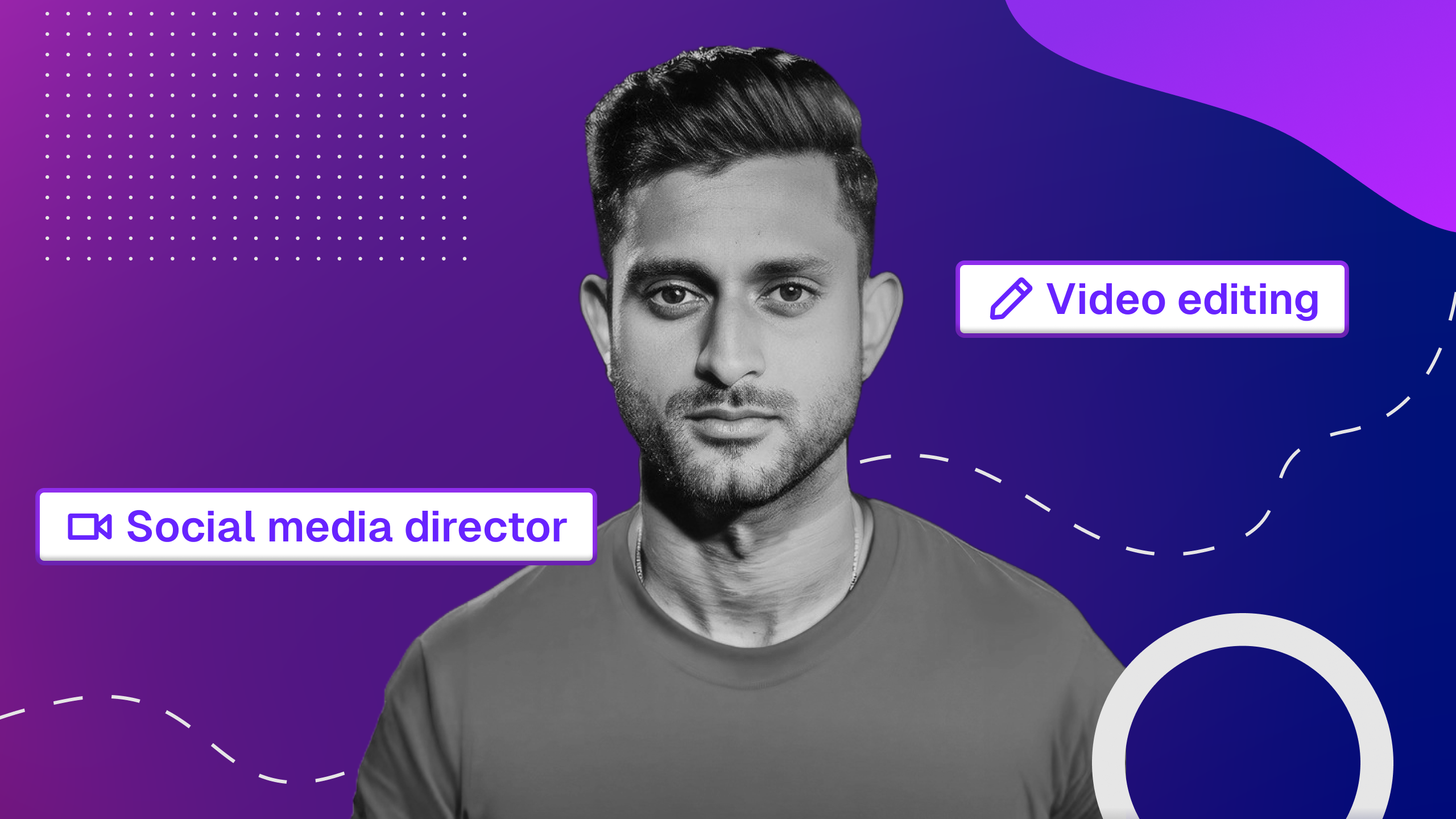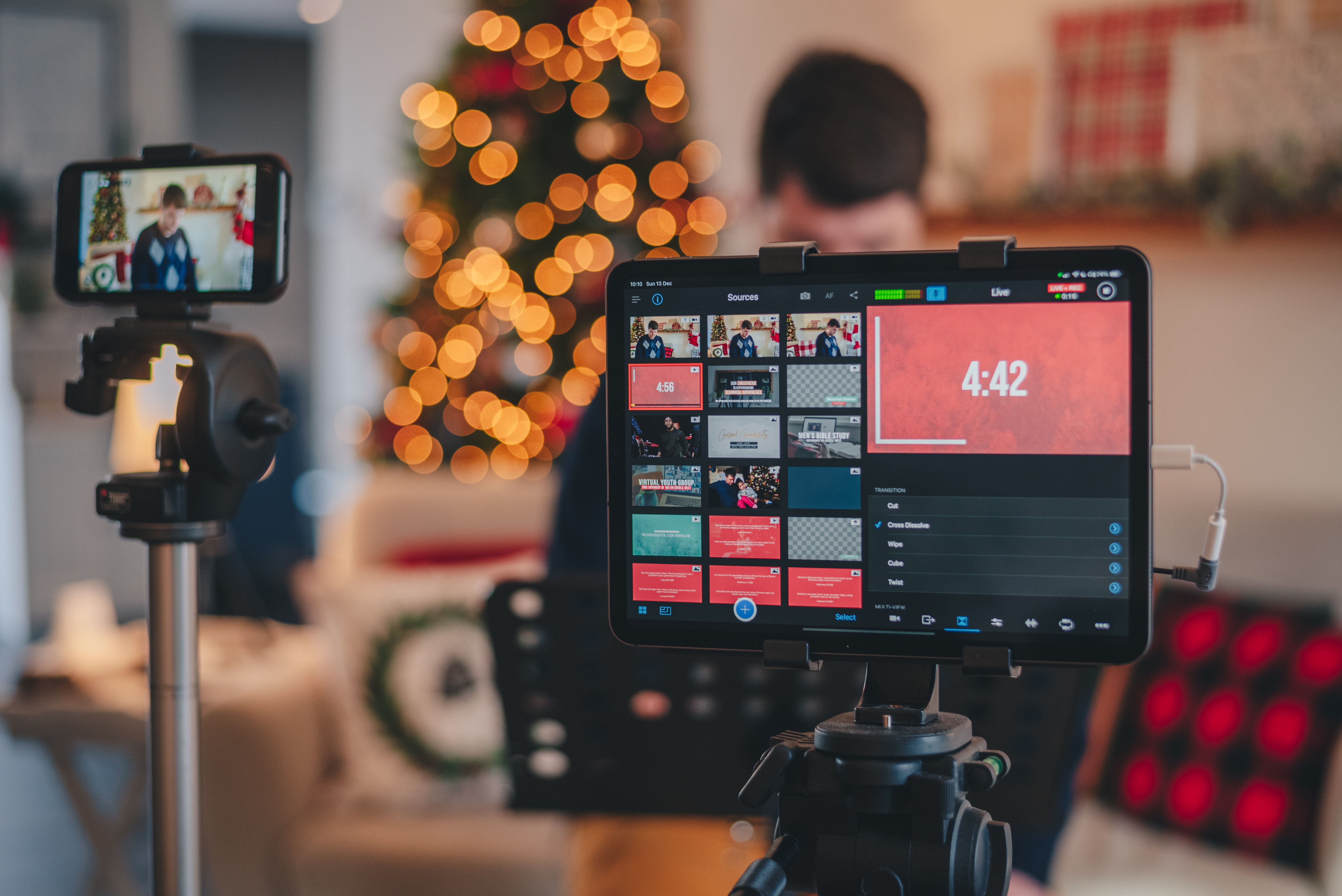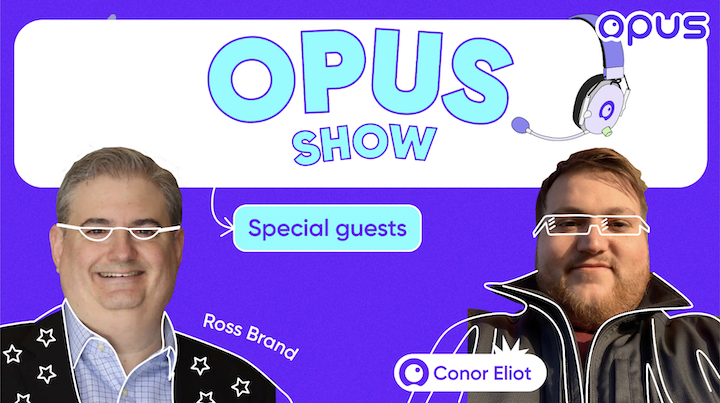How Theo Von built one of YouTube’s most addictive podcasts (and why it keeps growing)

Theo Von isn’t the kind of creator you can easily reverse-engineer.
He tells stories that start nowhere, loop around, and land somewhere strangely profound. He talks about “rat kings,” childhood trauma, and other unexpected topics in the same breath—and somehow, it works.
Today, his podcast This Past Weekend is one of the most-watched shows on YouTube. His clips flood TikTok. His episodes consistently cross the million-view mark. And his fans keep showing up week after week.
But growth like this doesn’t happen by accident. It comes from understanding what your audience connects with, even when it doesn’t follow the usual playbook.
In this breakdown, we look at how Theo built a format that fits him, found a rhythm his viewers can’t get enough of, and shaped it into a channel that keeps growing.
Let’s dive in.
Chaos and comedy before the channel found its core
Theo Von has been uploading to YouTube for nearly two decades.
His earliest videos date back to 2008. He shared short stand-up sets, reality TV clips, offbeat comedy experiments, and rough-cut glimpses of life on the road.
At the time, there was no channel strategy or long-term goal. YouTube was just another outlet for a working comic trying to make people laugh.
That same approach carried over when he launched This Past Weekend.
The podcast started as a loose mix of solo monologues, guest interviews, voicemails from fans, and the occasional character bit.

His content was funny, strange, and sometimes brilliant, but there was no clear system in place. It was raw creative energy without the structure to support it.
And eventually, that started to show.
YouTube didn’t know what to do with Theo Von’s content
Theo had been uploading for years, but for a long time his channel didn’t grow like a creator’s channel. It grew like a comedian’s archive.
Scroll through his uploads from 7 to 17 years ago and you’ll find a scattered mix, including:
- Clips promoting his comedy album 30lb Bag of Hamster Bones
- A Comic Con street interview with cosplayers
- A two-minute stand-up set from The Ice House

Even when This Past Weekend became the focus, the structure stayed loose. One week would be a caller-driven episode. The next might be a serious solo monologue. The next? A vague-titled guest episode with no context in the thumbnail.
The problem wasn’t the content. Theo’s storytelling was always sharp. But the channel lacked consistency, and that hurt growth.
YouTube didn’t know how to categorize it. New viewers didn’t know what to expect. And the algorithm couldn’t build a recommendation loop around a format that kept shifting.
He wasn’t a clips channel. He wasn’t a podcast channel. He wasn’t a vlog channel. He was somewhere in between—and that “in between” space made it harder to build audience-content fit.
But all of that changed when he committed to one thing.
The moment Theo stopped uploading clips (and started building a channel)
The turning point came when Theo began treating This Past Weekend like a real show.
He committed to long-form video episodes, established a regular release rhythm, and started bringing in bigger guests more consistently. Over time, the channel began to take on a clearer identity: two people on a couch, one unpredictable conversation.
And the guest list kept leveling up. He went from sporadic appearances to back-to-back interviews with names like Joe Rogan, Neil deGrasse Tyson, Jordan Peterson, and even Donald Trump.

These episodes pulled in massive views, signaling to YouTube—and to new audiences—that the channel had weight.
Once the format became consistent, so did the packaging.
Titles became clearer, thumbnails more recognizable, and the tone more focused.
Instead of jumping between formats, viewers started coming back for a specific kind of experience. What began as a messy feed of clips became a channel people could subscribe to with confidence.
And with that structure in place, Theo’s growth started to compound.
So what exactly made it all stick? Let’s break it down.
4 key strategies behind Theo Von’s YouTube growth
Theo Von’s growth wasn’t sudden, and it wasn’t random.
Once his show locked into a clear format, a few key decisions helped everything start working together.
In this section, we’ll discuss four strategies that turned his channel into one viewers kept coming back to.
1. He created the content his subscribers actually wanted
Theo’s biggest growth unlock wasn’t a marketing tactic or production upgrade. It was finding audience-content fit.
He realized people weren’t showing up for short vlogs or stand-up clips. They kept coming back for the long-form interviews—the ones that felt honest, unscripted, and a little messy in all the right ways.
So, Theo fully committed to that format. He leaned into long, immersive interviews and allowed the conversations to take shape naturally, without forcing a fixed direction.
You can see this clearly in his recent interview with Mark Zuckerberg.

Instead of jumping straight into tech, they opened with parenting, marriage, caffeine, and life with three daughters. The conversation only shifted into AI, augmented reality, and the future of Meta much later.
That pacing reflected what his audience had already come to expect from him. And that’s the essence of audience-content fit—not just choosing a format that works, but one that feels native to the way your viewers want to experience it.
If you’re a long-form creator, this approach is well within reach. Sometimes, you don’t need high-concept segments or flashy transitions. What keeps people watching is the conversation itself and the way it’s delivered.
2. He created the kind of content fans would clip organically
Theo’s language is wild, specific, and hard to forget. His analogies sound improvised, but they land in ways that make people laugh, rewind, or share.
He doesn’t aim for punchlines, but his way of speaking makes his content naturally clippable. One-liners, metaphors, and unpredictable phrasing show up in almost every episode.
Fans pick up on that. Some turn these moments into bite-sized clips for TikTok and YouTube Shorts. Others collect them into themed compilations: his best analogies, funniest moments, or most emotional reactions.

These clips help new viewers discover his channel and give them an easy way in.
If your content has moments that hit in a way people remember, don’t leave them buried. Highlight them. Package them. Let them pull people deeper into your world.
3. He kept the format consistent but never predictable
Theo’s setup is simple: two people, one couch, and a loose conversation.
That balance between consistency on the outside and unpredictability within is part of what makes the channel so bingeable. YouTube knows what to recommend. Viewers know what to expect. But no two episodes feel the same.
It’s also a clear example of audience-content fit. The format works because it matches how the audience wants to engage: casually, with room for surprise.
If you’re trying to grow, don’t underestimate consistency. Find the structure that fits your style, then keep showing up inside it. That’s how you build trust and retention.
4. He built a system that turns one episode into many
Theo doesn’t rely on a single channel to carry everything. He runs three:
- A main channel for full episodes
- A second channel for mid-length clips (10–30 minutes)
- A Shorts channel for quick-hit discovery

Each one meets viewers at a different stage. Some want the full conversation. Others drop in for a segment. Many find him through a short and work their way up.
It’s a system built for reach, retention, and reuse. And it works because people don’t all watch the same way.
For creators with a growing library, this kind of setup makes it easier to scale without creating from scratch every week. Sometimes, you don’t need more content. You just need a smarter way to use what you already have.
That’s where tools like OpusSearch come in.
How OpusSearch helps creators scale smarter
Theo Von doesn’t just upload full podcast episodes. He also publishes mid-length clips on a separate channel.

This format helps him reach more viewers, boost watch time, and unlock additional monetization opportunities. It’s a simple strategy that gives each piece of content more mileage.
But most creators don’t have the time or support to comb through hours of footage, pick out high-performing segments, and spin them into new videos every week.
That’s why we created OpusSearch.

OpusSearch lets you search your entire video catalog by guest name, keyword, topic, or moment. It helps creators instantly surface the segments worth turning into standalone videos, without needing a large team or a complicated workflow.
For podcasters, it’s especially useful. You can:
- Search for every clip where a guest tells a personal story and pull 15-minute highlights
- Find every moment tied to a specific topic across multiple episodes, and use them to build a focused playlist or even launch a new channel
- Filter for recurring themes your audience already responds to, and turn them into evergreen mid-length content or compilation videos
And it’s not just for podcasters. If you’re a creator with a growing video library and want to scale without constantly starting from scratch, OpusSearch gives you the tools to do it.
Ready to scale your channel with what you’ve already created? Book a demo with the OpusSearch team to see how our tool can work for you.
You don’t need to change your voice to grow
Theo Von didn’t take off because he changed direction. He took off because he finally chose a direction and stuck with it.
Once the format locked in, the uploads got more focused. The content became easier to follow. And viewers started knowing what to expect every time they showed up.
Through all of it, he stayed true to his voice. The tone didn’t change. The stories didn’t get safer. He simply gave the content a structure that helped it land.
Theo’s YouTube success is a timely reminder that growth comes from sticking with what works.
Don’t overcomplicate the process.
Make it real. Make it last.
That’s how you win on YouTube. The Theo Von way.



